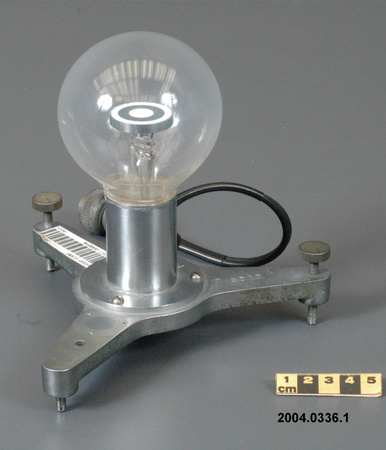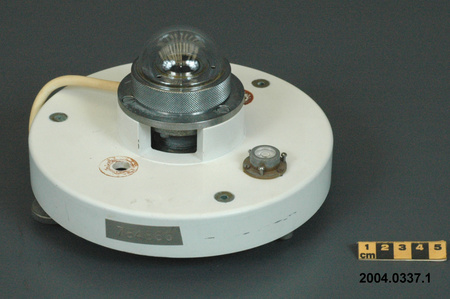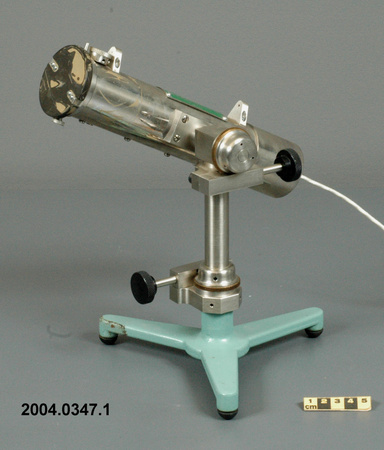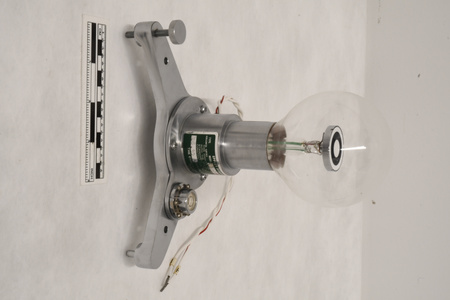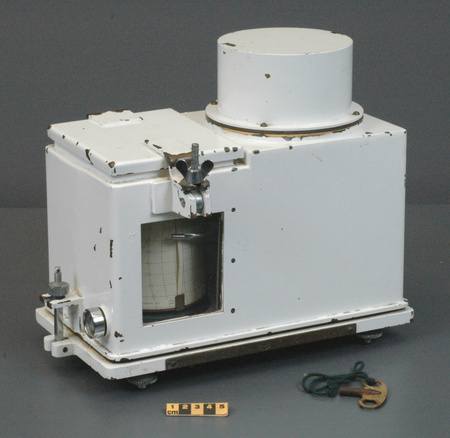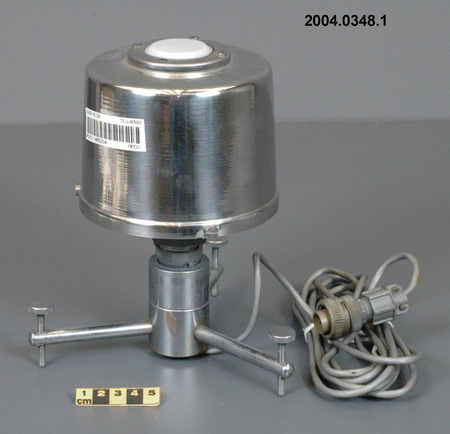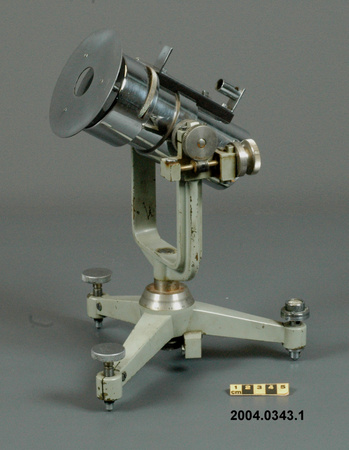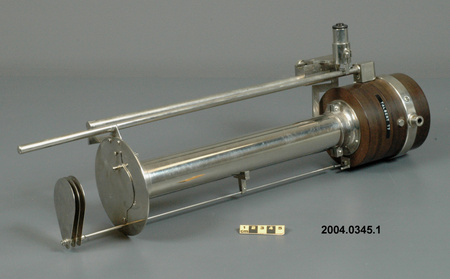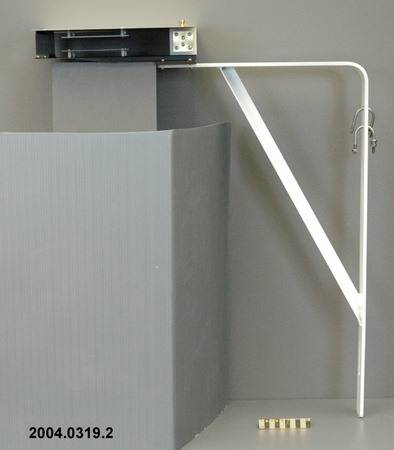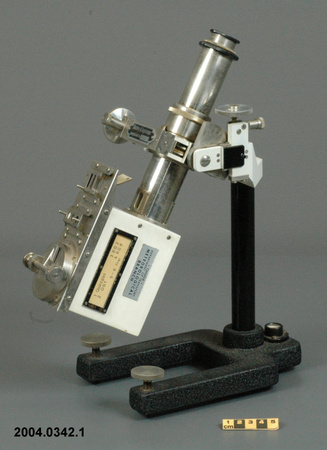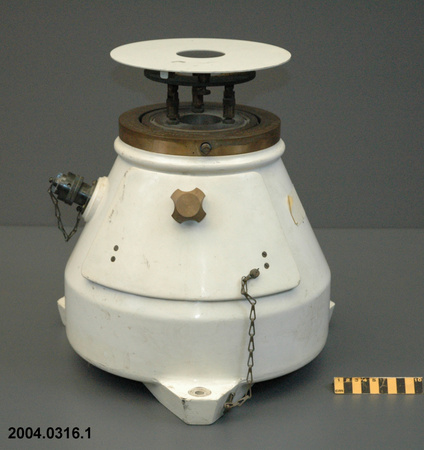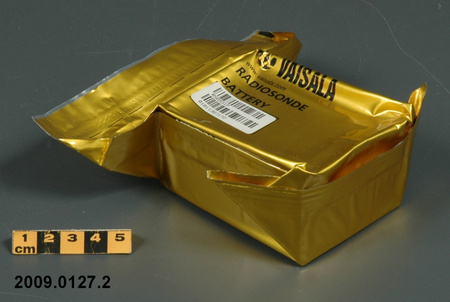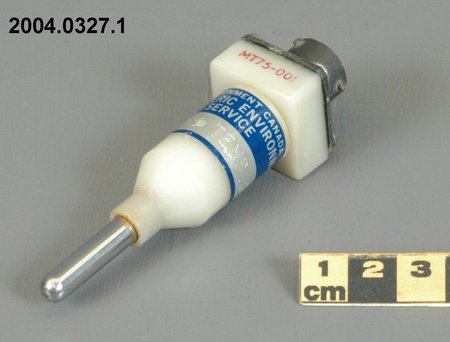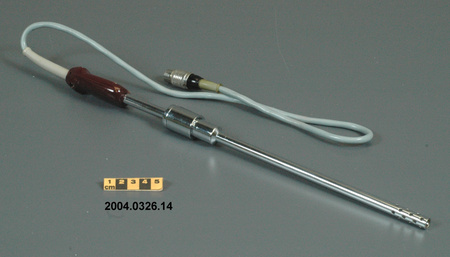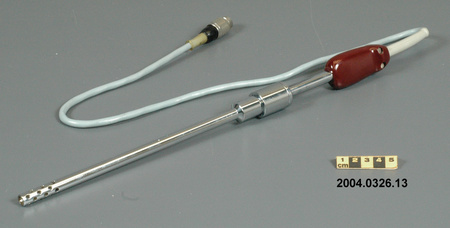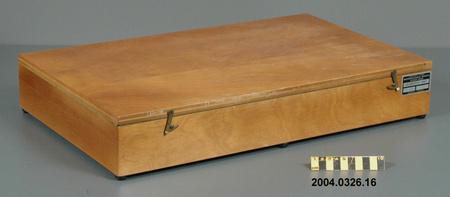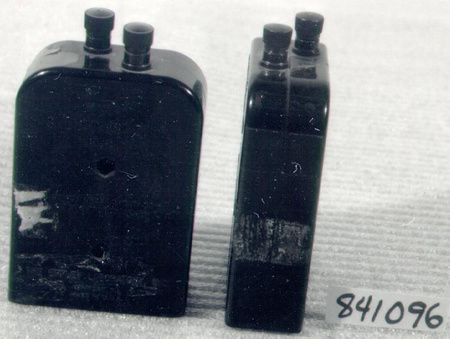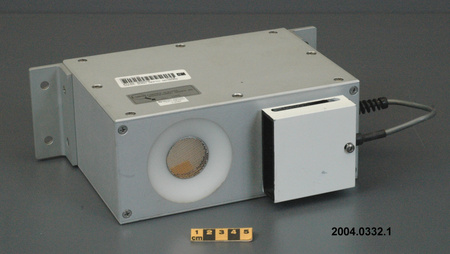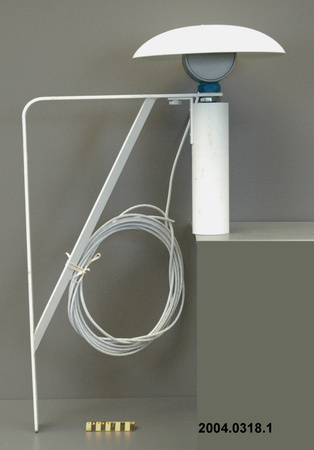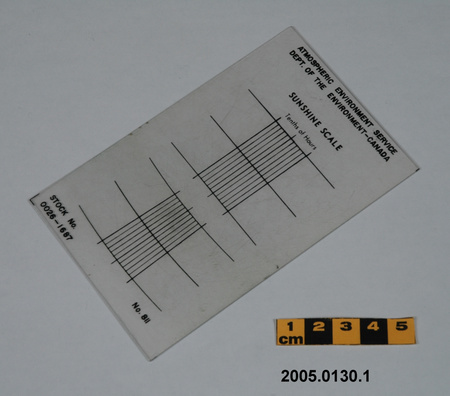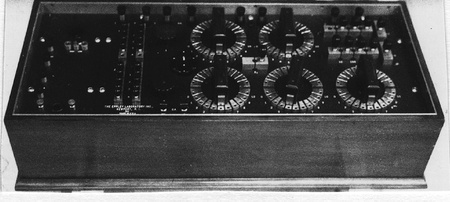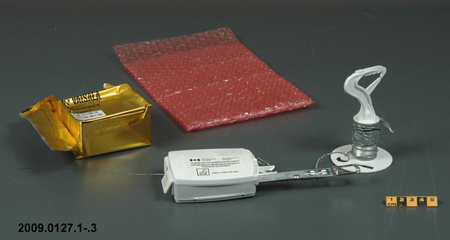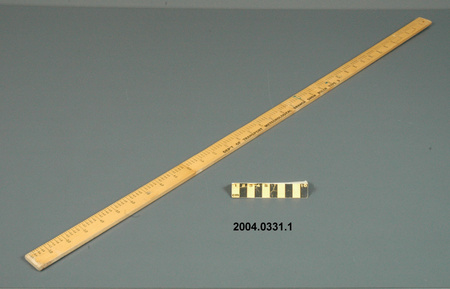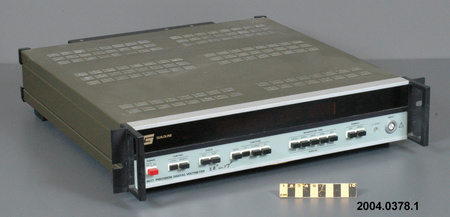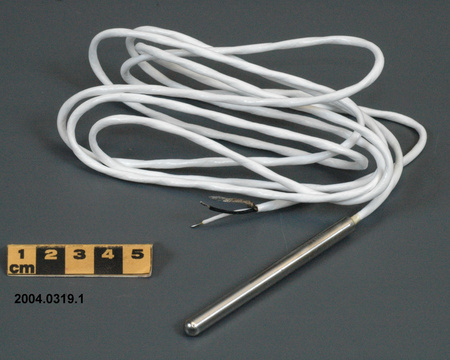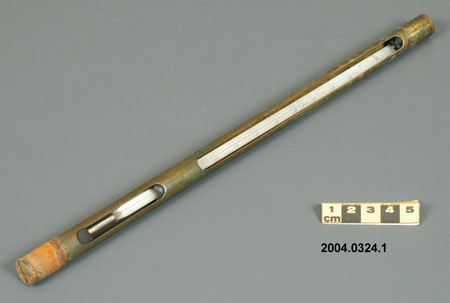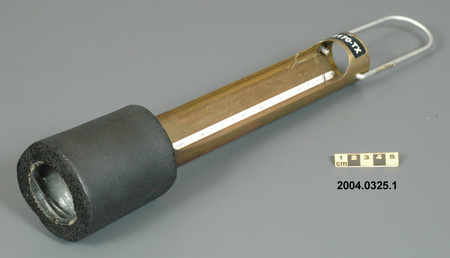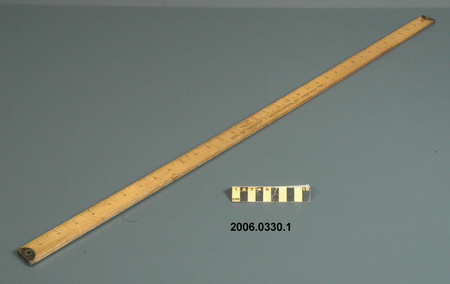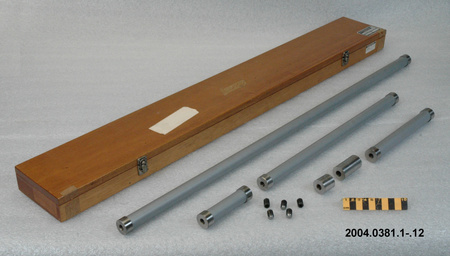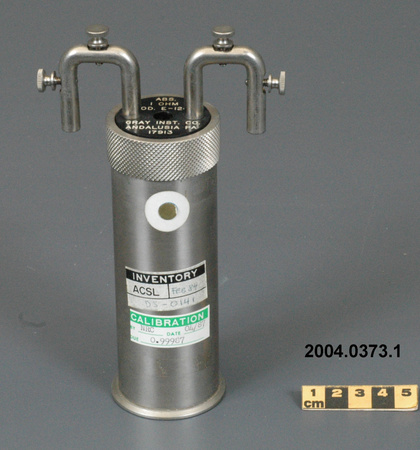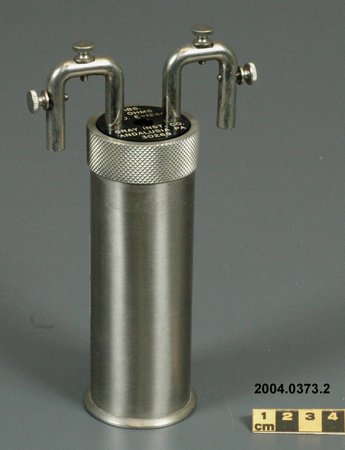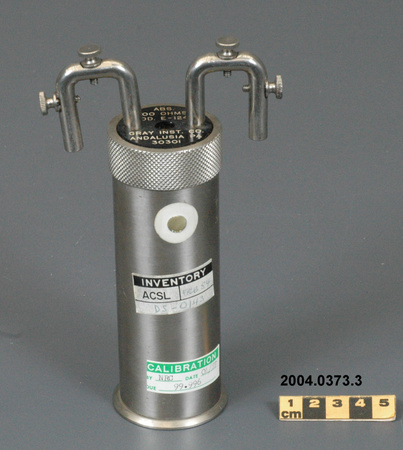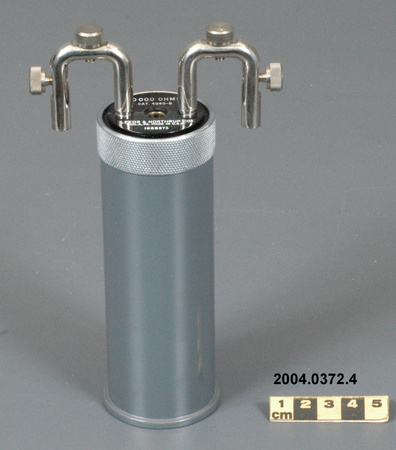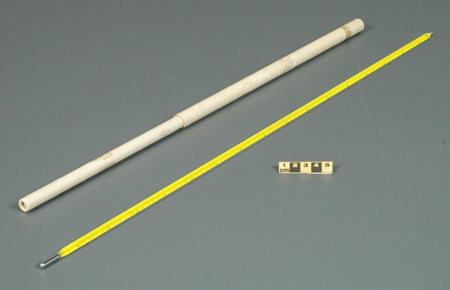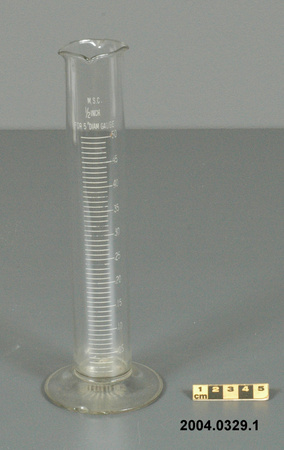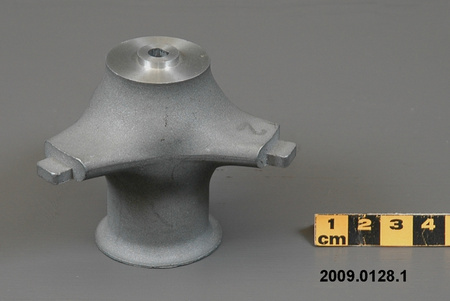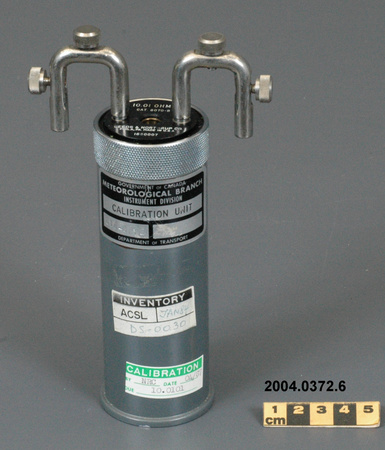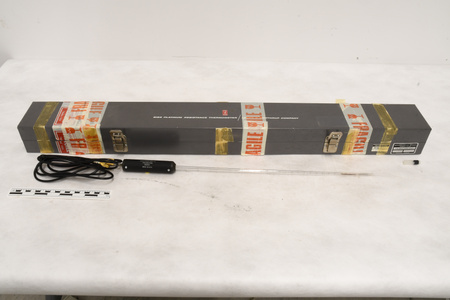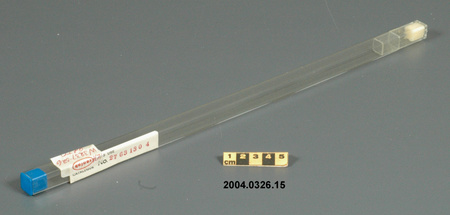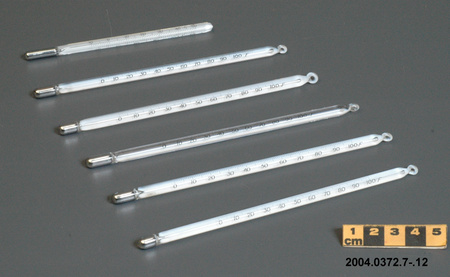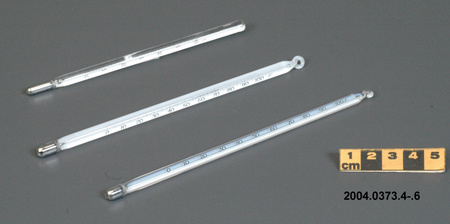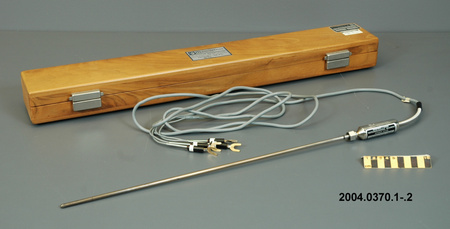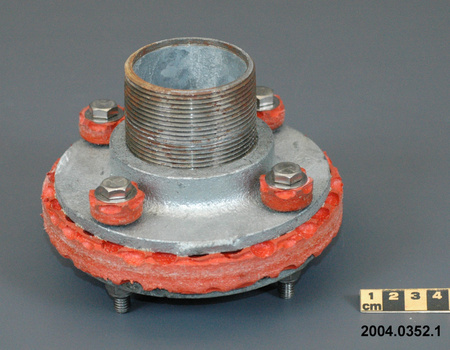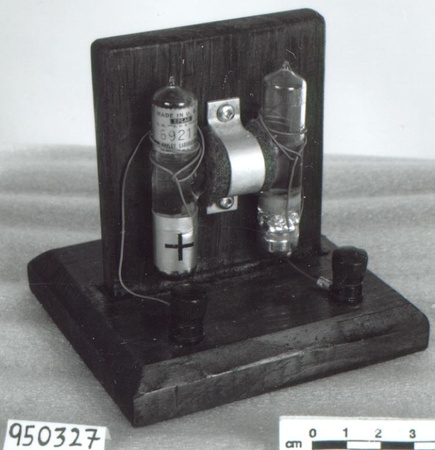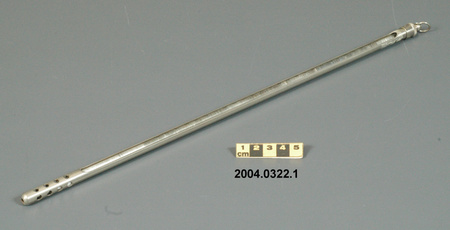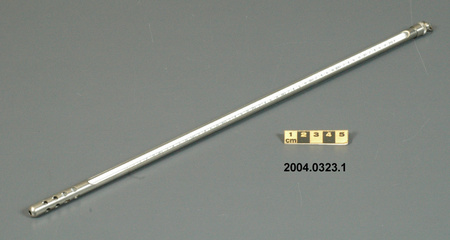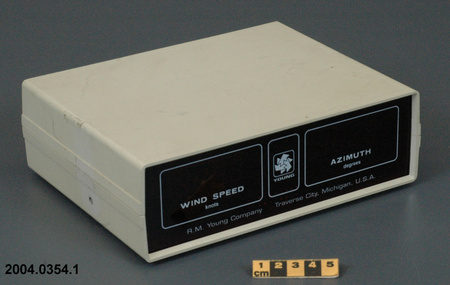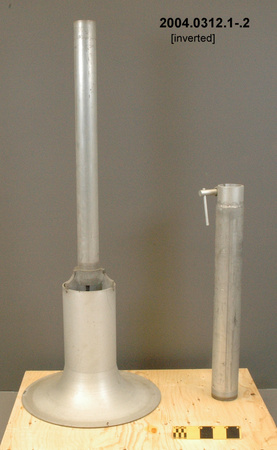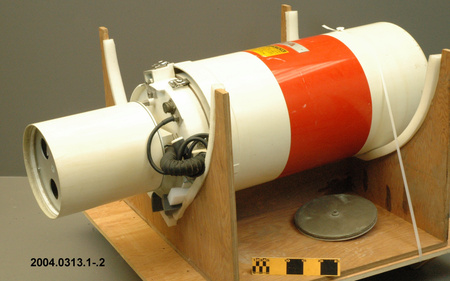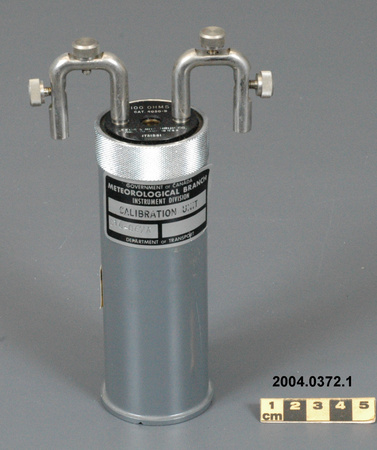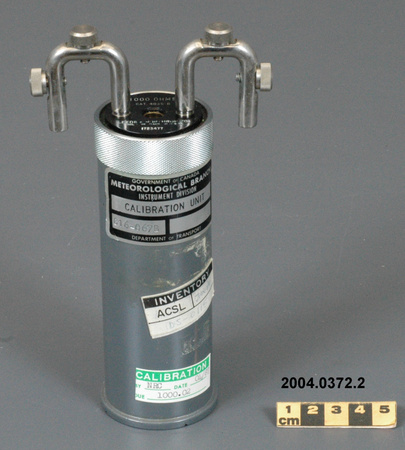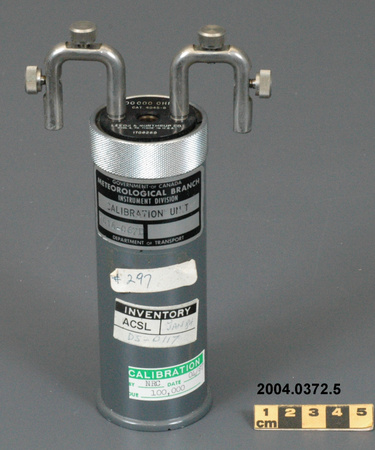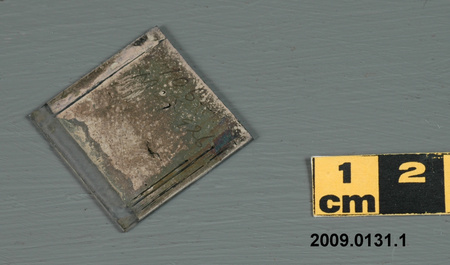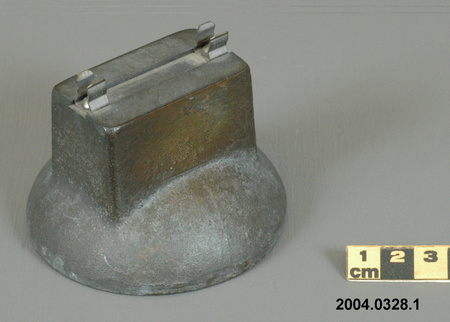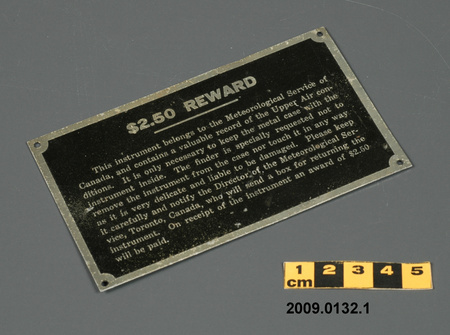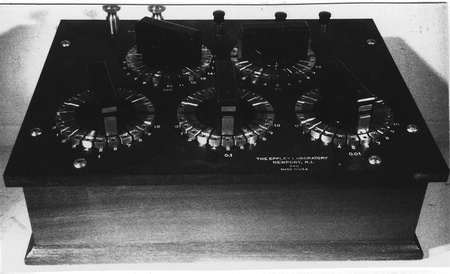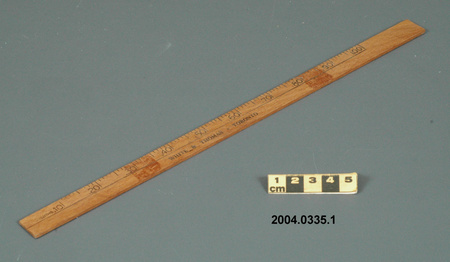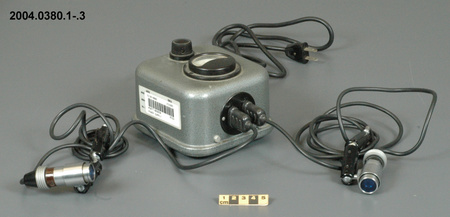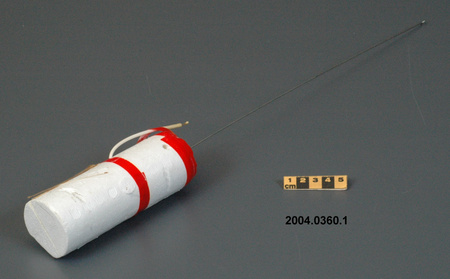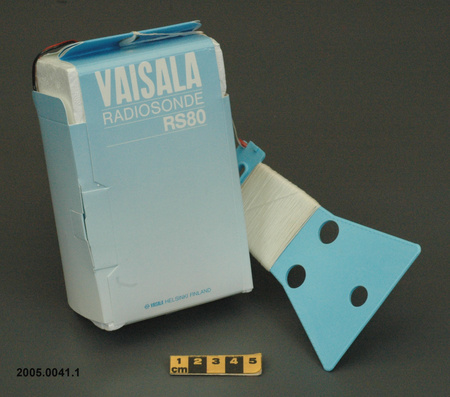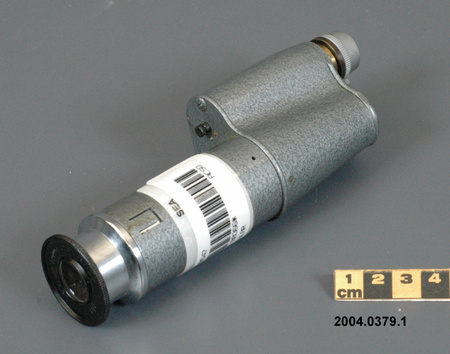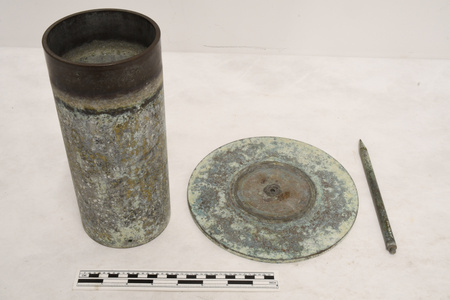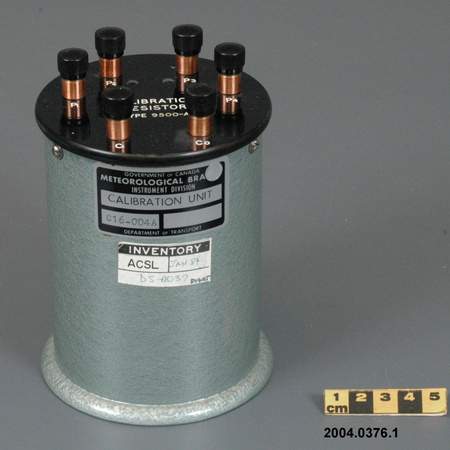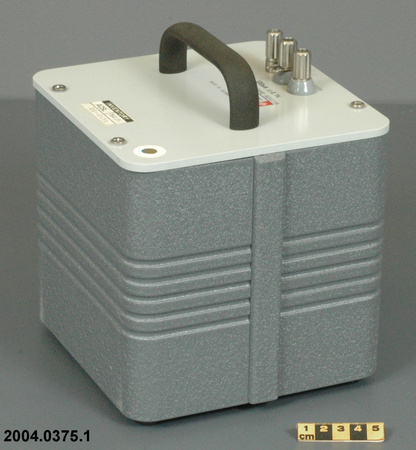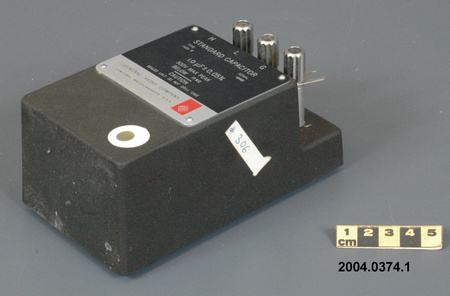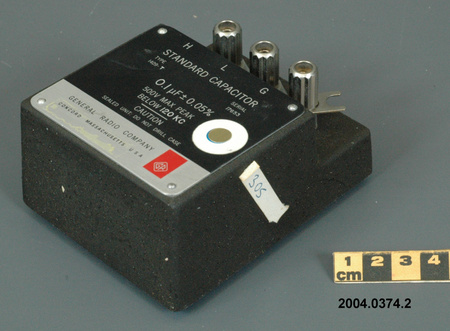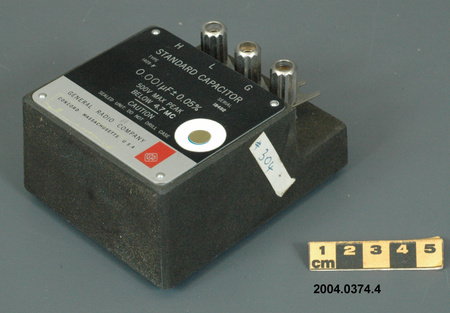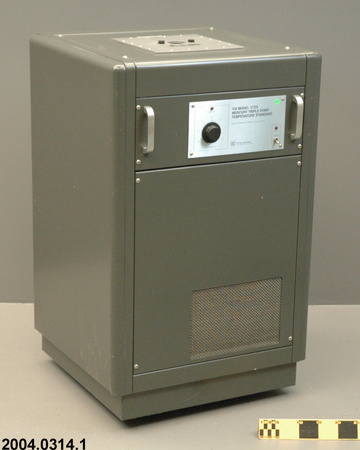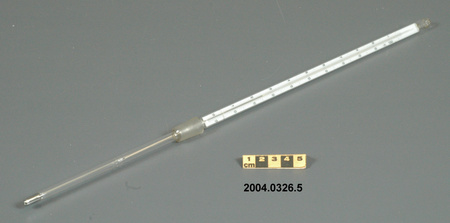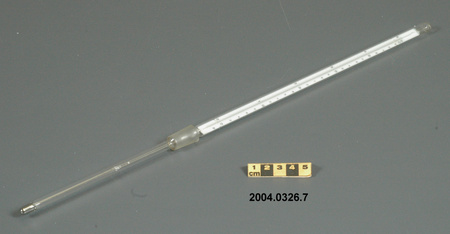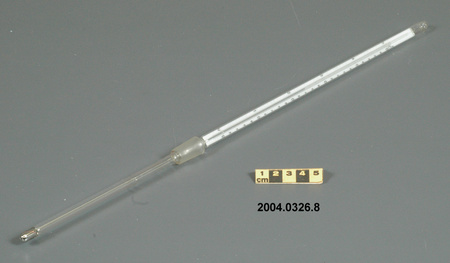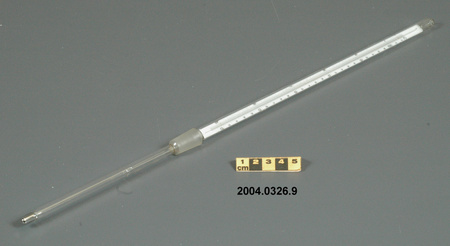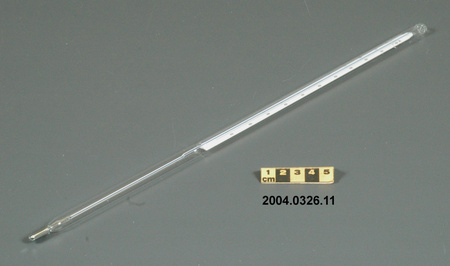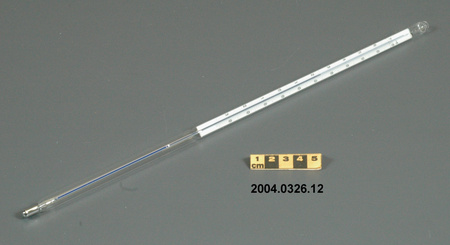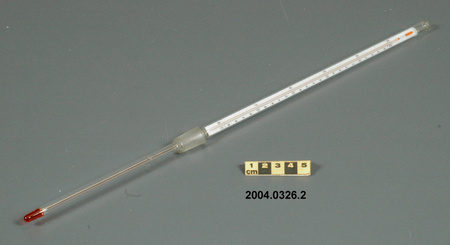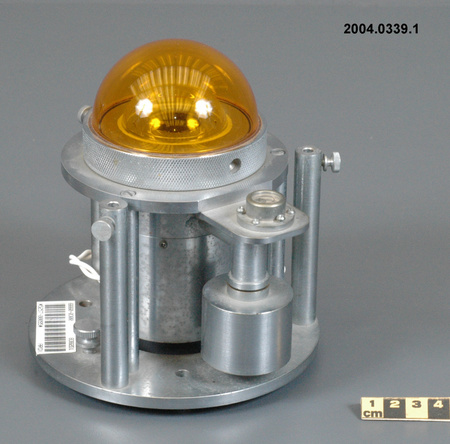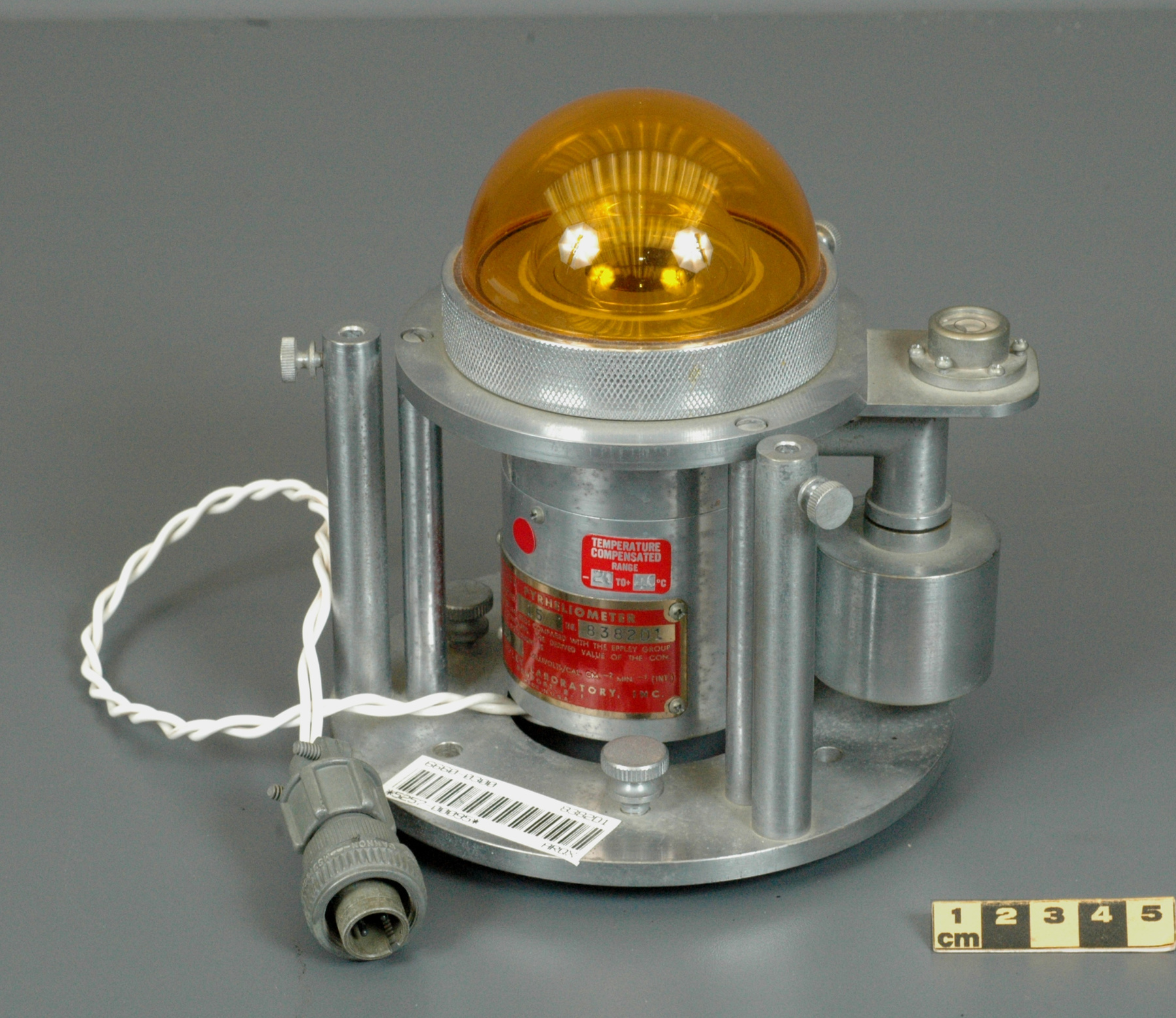Pyranometer
Use this image
Can I reuse this image without permission? Yes
Object images on the Ingenium Collection’s portal have the following Creative Commons license:
Copyright Ingenium / CC BY-NC-ND (Attribution-NonCommercial 4.0 International (CC BY-NC 4.0)
ATTRIBUTE THIS IMAGE
Ingenium,
2004.0339.001
Permalink:
Ingenium is releasing this image under the Creative Commons licensing framework, and encourages downloading and reuse for non-commercial purposes. Please acknowledge Ingenium and cite the artifact number.
DOWNLOAD IMAGEPURCHASE THIS IMAGE
This image is free for non-commercial use.
For commercial use, please consult our Reproduction Fees and contact us to purchase the image.
- OBJECT TYPE
- double dome
- DATE
- 1967
- ARTIFACT NUMBER
- 2004.0339.001
- MANUFACTURER
- EPPLEY LABORATORY INC.
- MODEL
- 15
- LOCATION
- Newport, Rhode Island, United States of America
More Information
General Information
- Serial #
- 8382D1
- Part Number
- 1
- Total Parts
- 1
- AKA
- N/A
- Patents
- N/A
- General Description
- metal sensor with double glass bubble/ metal casing, frame and parts/ synthetic wire covering/ liquid spirit in glass & metal level housing
Dimensions
Note: These reflect the general size for storage and are not necessarily representative of the object's true dimensions.
- Length
- 16.5 cm
- Width
- 13.5 cm
- Height
- N/A
- Thickness
- N/A
- Weight
- N/A
- Diameter
- N/A
- Volume
- N/A
Lexicon
- Group
- Meteorology
- Category
- Sunshine intensity & duration measurement
- Sub-Category
- N/A
Manufacturer
- AKA
- EPLAB
- Country
- United States of America
- State/Province
- Rhode Island
- City
- Newport
Context
- Country
- Canada
- State/Province
- Unknown
- Period
- 1967+; this instrument was apparently in use for 40 years (Ref. 9)
- Canada
-
An example of a solar radiation measuring instrument of a type used by the Canadian Meteorological Service. The Eppley 50-K and Model 2 pyranometers, the Eppley Precision Spectral Pyranometer (PSP) and Precision Infrared Pyrgeometer (PIR) were all radiation instruments used to measure solar radiation at Canadian observing stations between 1970 and 1994 (Refs. 6-7). This model is not mentioned in the MSC literature available. Part of a large collection of meteorological instruments acquired from the Meteorological Service of Canada (previously Atmospheric Environment Service) by the CSTM since 1967. MSC is the government agency responsible for collecting and disseminating meteorological data and forecasts in Canada. It was founded in 1871 in Toronto where it is still headquartered. The MSC was originally on the University of Toronto downtown campus but moved to Downsview in 1971 on land owned by UofT. The headquarters houses laboratories, research facilities and calibration and instrument maintenance facilities (now largely contracted out). - Function
-
An instrument designed to measure global solar radiation (RF1), the total incoming short-wave radiation from the whole dome of the sky, as received on a flat, horizontally mounted thermopile sensor (Ref. 2) - Technical
-
An Eppley horizontal surface pyranometer with a levelling base. It has a double glass dome protecting the sensor which consists of flat concentric rings, one ring silver, the inner one blackened. The double clear domes reduce the temperature variations between the sensor and its reference (Ref. 1). The model 15 appears to be another, possibly earlier, version of the1990's to present Eppley PSP (Precision Spectrum Pyranometer) (see. Refs. 2-3). According to the manufacturer, this instrument (SN 8382D1) was supplied in 1967 (Ref. 4). Virtually all the energy available on the earth is dependant upon the energy received from the sun. The sun's output has varied by only 0.1% in recent times. Hence it is a source of very constant energy. This radiation arrives mostly in the form of visible radiation which peaks at the green 0.6 mm wavelength. Some of this radiation is lost by reflection from clouds or dust, and some by reradiation from the atmosphere. There is a delicate balance between gains and losses. A slight imbalance can shift the earth into an ice age or into runaway climate warming. For this reason alone it is necessary to monitor radiation. Solar radiation is the visible radiation from the sun with wavelengths from 0.3 mm (micrometres) (violet) to 0.9 mm (red). Global solar radiation (Radiation Field 1 or RF1) measurements are made using pyranometers at sites in the radiation network. This is a measurement of all the incoming solar radiation and comprises the bulk of radiation measurements in the radiation network of 43 stations as of 2002. The RF-1 instruments use a shrouded AES designed ventilator which prevents precipitation from landing on the sensor and reduces the collection of dirt on the domes (Ref. 1). - Area Notes
-
Unknown
Details
- Markings
- silver lettering on red plate reads 'EPPLEY PYRHELIOMETER/ TYPE HORIZONTAL SURFACE/ MODEL 15 NO. 8382D1/ THIS RADIOMETER HAS BEEN COMPARED WITH THE EPPLEY GROUP/ OF REFERENCE STANDARDS. THE DERIVED VALUE OF THE CON-/ STANT FOR THIS INSTRUMENT IS:/ 5.10 MILLIVOLTS /CAL. CM. -2 MIN.-1 (INT.)/ THE EPPLEY LABORATORY, INC./ NEWPORT, R.I./ MADE IN U.S.A.'/ white AES label with black lettering reading '6660-300 8382D1/ [bar code]/ *5257-00095* ARQX'/
- Missing
- shield (see 2004.0338)
- Finish
- black and silver sensor/ yellow transparent glass/ metallic casing, frame and parts/ white synthetic
- Decoration
- N/A
CITE THIS OBJECT
If you choose to share our information about this collection object, please cite:
EPPLEY LABORATORY INC., Pyranometer, 1967, Artifact no. 2004.0339, Ingenium – Canada’s Museums of Science and Innovation, http://collection.ingenium.ca/en/id/2004.0339.001/
FEEDBACK
Submit a question or comment about this artifact.
More Like This

